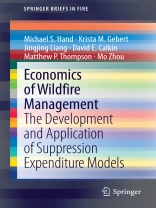In this age of climatic and financial uncertainty, it becomes increasingly important to balance the cost, benefits and risk of wildfire management. In the United States, increased wildland fire activity over the last 15 years has resulted in drastic damage and loss of life. An associated rapid increase in fire management costs has consumed higher portions of budgets of public entities involved in wildfire management, challenging their ability to fulfill other responsibilities. Increased public scrutiny highlights the need to improve wildland fire management for cost effectiveness. This book closely examines the development of basic wildfire suppression cost models for the United States and their application to a wide range of settings from informing incident decision making to programmatic review. The book also explores emerging trends in suppression costs and introduces new spatially explicit cost models to account for characteristics of the burned landscape. Finally, it discusses how emerging risk assessment tools can be better informed by integrating management cost models with wildfire simulation models and values at risk. Economics of Wildfire Management is intended for practitioners as a reference guide. Advanced-level students and researchers will also find the book invaluable.
विषयसूची
Introduction: A new look at wildfire management expenditures.- Development and application of wildland fire expenditures models.- Regional and Temporal Trends in Wildfire Suppression Expenditures.- Modeling Fire Expenditures with Spatially Descriptive Data.- Linking suppression expenditure modeling with large wildfire simulation modeling.- Outlook and Future Research Directions for the Economics of Wildfire Management.












